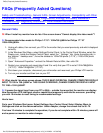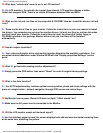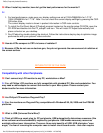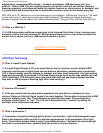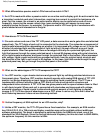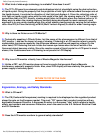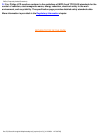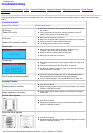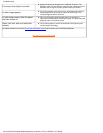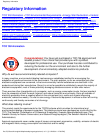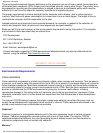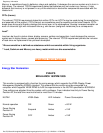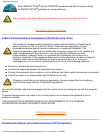
Q: What kind of wide-angle technology is available? How does it work?
A: The TFT LCD panel is an element controls/displays inlet of a backlight using the dual-refraction
of liquid crystal. Using the property that the projection of inlet light refracts toward the major axis of
the liquid element, it controls the direction of inlet light and displays it. Since the refraction ratio of
inlet light on liquid crystal varies with the inlet angle of the light, the viewing angle of a TFT is much
narrow than that of a CDT. Usually, viewing angle refers to the point where the contrast ration is 10.
Many ways to widen the viewing angle are currently being developed the most commonly used
approach is to use a wide viewing angle film, which widens viewing angle by varying the refraction
ratio. Also IPS (In Plane Switching) or MVA (Multi Vertical Aligned) is used for wider viewing angle.
Q: Why is there no flicker on an LCD Monitor?
A: Technically speaking, LCDs do flicker, but the cause of the phenomenon is different from that of
CRT monitor -- and has no impact of ease of viewing. Flickering in a LCD monitor refers to usually
undetectable luminance caused by the difference between positive and negative voltage. On the
other hand, CRT flickering that can irritate the human eye comes when the on/off action of the
florescent object becomes visible. Since the reaction speed of liquid crystal in a LCD panel is much
slower, this troublesome form of flickering is not present in LCD display.
Q: Why is an LCD monitor virtually free of Electro Magnetic Interference?
A: Unlike a CRT, an LCD monitor does not have key parts that generate Electro Magnetic
Interference, especially magnetic fields. Also, since LCD display utilizes relatively low power, its
power supply is extremely quiet.
RETURN TO TOP OF THE PAGE
Ergonomics, Ecology, and Safety Standards
Q:
What is CE mark?
A: The CE (Conformité Européenne) marking is required to be displayed on the regulated product
placed for sale on the European market. This mark "CE" means that a product complies with an
applicable European Directive. A European Directive is a European "Law" which relates to health,
safety, environment and consumer Protection, much the same as the U.S. National Electrical Code
and UL Standards.
Q: Does the LCD monitor conform to general safety standards?
FAQs (Frequently Asked Questions)
file:///D|/Grace/K1/english/180p2m/safety/saf_faq.htm (7 of 8) [11/22/2001 1:47:36 PM]





